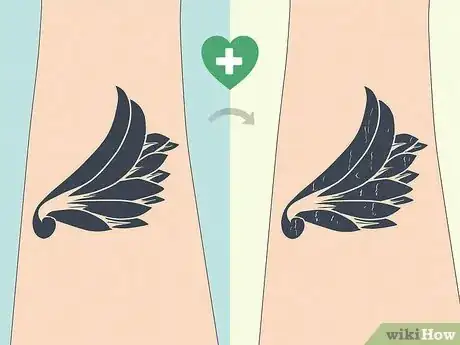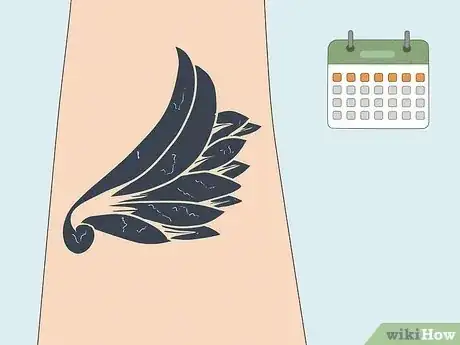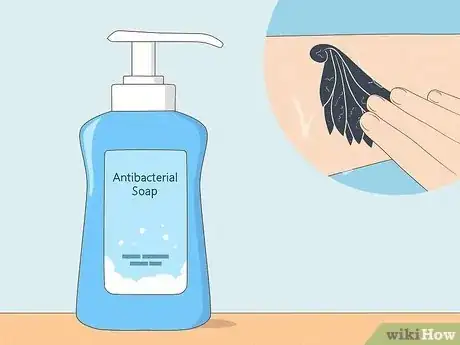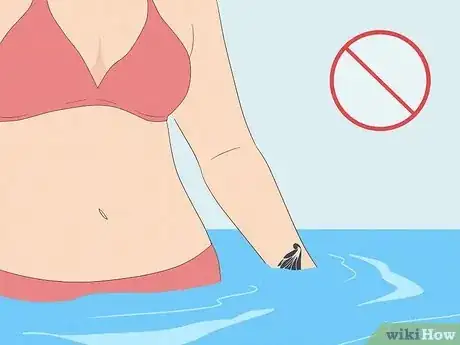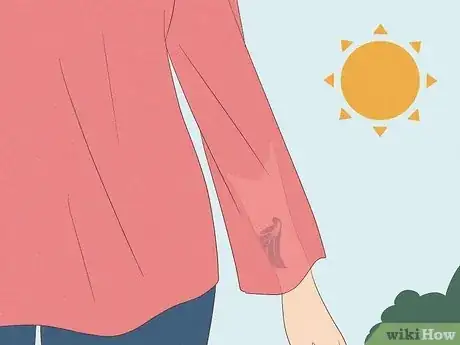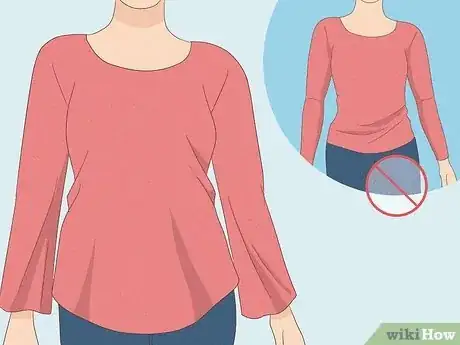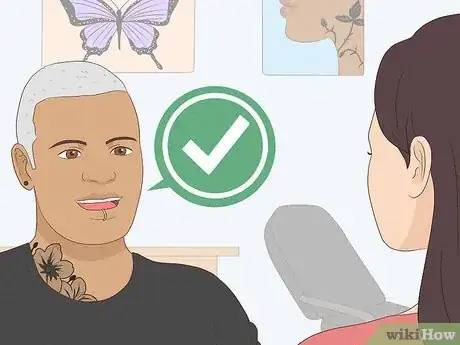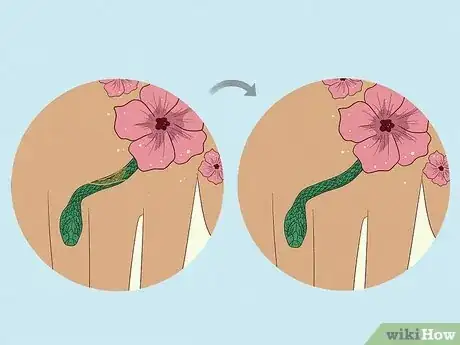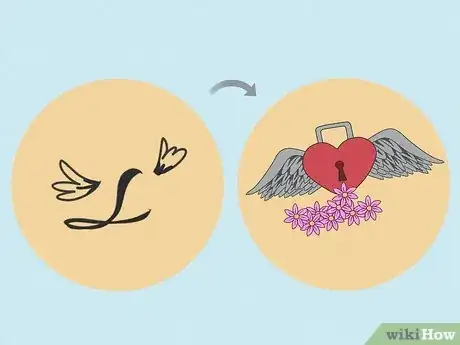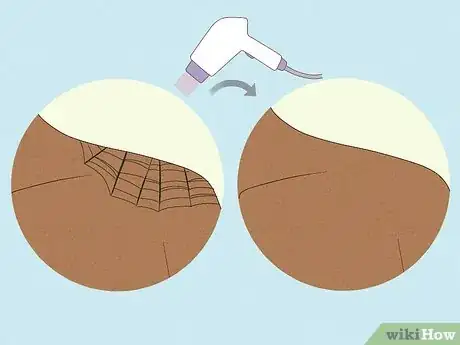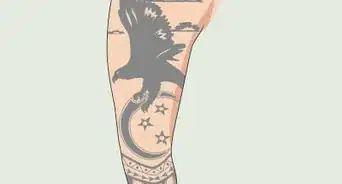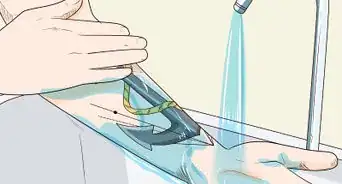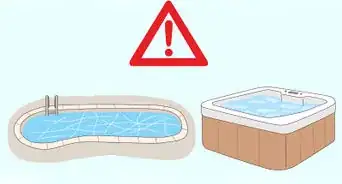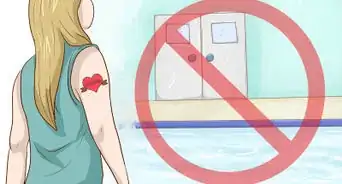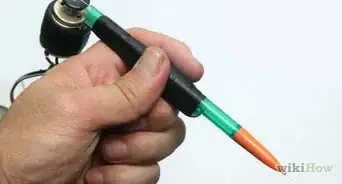This article was written by Michelle Myles and by wikiHow staff writer, Janice Tieperman. Michelle Myles is the Co-owner of Daredevil Tattoo, a tattoo shop located based in New York City's Lower East Side. Michelle has more than 20 years of tattooing experience. She also operates the Daredevil Tattoo Museum, co-owner Brad Fink's personal collection of antique tattoo memorabilia that he has amassed over the last 27 years of tattooing.
There are 21 references cited in this article, which can be found at the bottom of the page.
This article has been viewed 24,526 times.
You’re loving your new tattoo, but the peeling process is making you a little nervous—especially when you don’t see any ink beneath the peeling scabs. Is this normal, or is your tattoo totally ruined? Don’t panic. We’ve covered everything you need to know about scabbing and peeling tattoos, so you can know exactly why your ink looks the way it does. Plus, we'll let you know when there's a problem with your tattoo, and how to fix it if that's the case.
This article is based on an interview with our tattoo artist, Michelle Myles, co-owner of Daredevil Tattoo. Check out the full interview here.
Things You Should Know
- Tattoos tend to peel without any ink underneath as they heal normally. In rare cases, they can have missing ink due to an artist’s error.
- Peeling tattoos with missing ink aren’t usually anything to worry about. It’s normal for a tattoo to peel and lose a little bit of ink as your skin heals.
- Care for your tattoo diligently by keeping it clean, moisturized, dry, and out of the sun.
Steps
Warnings
- Call your doctor right away if you suspect that your tattoo might be infected.[29] Redness, irritation, and pain around your tattoo are all common signs of an infection.⧼thumbs_response⧽
- Don’t exercise for at least 5 days after you get a new tattoo. To play it extra safe, wait 2 weeks. Sweat can extend your tattoo’s healing process and even lead to an infection.[30]⧼thumbs_response⧽
References
- ↑ https://authoritytattoo.com/milky-tattoo/
- ↑ https://authoritytattoo.com/patchy-tattoo/
- ↑ https://authoritytattoo.com/new-tattoo-leaking-ink/
- ↑ https://archives.evergreen.edu/webpages/curricular/1999-2000/humanbio/TattooInk.htm
- ↑ https://www.corriganclaytattoo.com/troubleshooting-tattoos/
- ↑ https://authoritytattoo.com/overworked-tattoo/
- ↑ https://authoritytattoo.com/overworked-tattoo/
- ↑ https://authoritytattoo.com/how-long-do-tattoos-peel-for/
- ↑ https://www.femaletattooers.com/tattoo-tips/tattoo-healing-stages-artists-explain-what-to-expect/
- ↑ https://wexnermedical.osu.edu/blog/how-to-care-for-a-new-tattoo
- ↑ https://wexnermedical.osu.edu/blog/how-to-care-for-a-new-tattoo
- ↑ https://www.bodylanguagetattoo.org/aftercare-crhd
- ↑ https://authoritytattoo.com/how-often-lotion-on-new-tattoo/
- ↑ https://patient.uwhealth.org/education/after-care-instructions-for-permanent-tattooing
- ↑ https://wexnermedical.osu.edu/blog/how-to-care-for-a-new-tattoo
- ↑ https://www.aad.org/public/everyday-care/skin-care-basics/tattoos/caring-for-tattooed-skin
- ↑ https://authoritytattoo.com/when-can-i-scratch-my-tattoo/
- ↑ https://authoritytattoo.com/tattoo-healing-process/
- ↑ https://authoritytattoo.com/how-long-do-tattoos-peel-for/
- ↑ https://www.femaletattooers.com/tattoo-tips/tattoo-healing-stages-artists-explain-what-to-expect/
- ↑ https://authoritytattoo.com/overworked-tattoo/
- ↑ https://www.femaletattooers.com/tattoo-tips/tattoo-cover-ups-tips-and-advice-from-artists/
- ↑ https://authoritytattoo.com/tattoo-healing-process/
- ↑ https://authoritytattoo.com/how-long-to-wait-for-tattoo-touch-up/
- ↑ https://www.plasticsurgery.org/cosmetic-procedures/tattoo-removal
- ↑ https://www.plasticsurgery.org/cosmetic-procedures/tattoo-removal/cost
- ↑ https://authoritytattoo.com/how-long-to-wait-for-tattoo-touch-up/
- ↑ https://authoritytattoo.com/overworked-tattoo/
- ↑ https://kidshealth.org/en/teens/tattoos.html
- ↑ https://authoritytattoo.com/sweating-with-a-new-tattoo/
